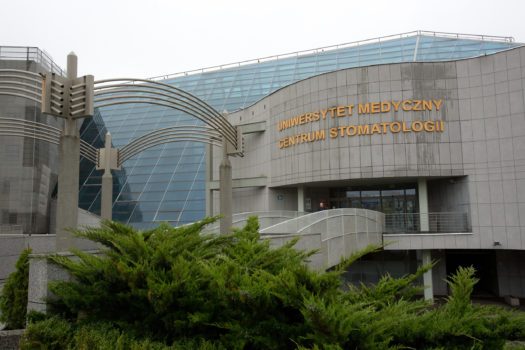Museum of the Poznań University of Medical Sciences
ul. Bukowska 70
60-812 Poznań
Tel. (61) 854 71 21 (Museum)
Tel. (61) 854 64 66 (Photographic Archives)
muzeum@ump.edu.pl
www.muzeum.ump.edu.pl
Free admission
Mondays – Fridays: 10 am – 3 pm
Group visits (advance booking is essential)
Director: Łucja Stasik MA
Staff: Ewa Sumelka MA
The founder of the museum was the initiator and first dean of the Medical Faculty at the University in Poznań, Prof. Adam Wrzosek, head of the Faculty and Department of the History and Philosophy of Medicine at the University of Poznań. The Museum of the History of Medicine was founded in 1920 as the second museum of its kind in Poland, alongside the one in Kraków. It is difficult to describe the collections due to the lack of inventories, most of which were destroyed during the German occupation. After the war, the exhibits were not reassembled and the museum ceased to exist in 1950. Starting from 1980, the work of gathering together physical traces of the history of medicine was continued by Prof. Roman Meissner. On 1 October 1980 he became head of the Independent Department of the History of Medicine (today’s Faculty and Department of the History of Medical Sciences). The museum was officially opened by
the rector of the Medical Academy, Prof. Antoni Pruszewicz, on 9 November 1989 in the Department’s seat at ul. Sieroca 10. The oldest exhibits – memorabilia belonging to Karol Marcinkowski and Prof. Heliodor Święcicki’s instrumentarium – are from Prof. Wrzosek’s pre-war collection. Until 2004, the museum operated within the Department of the History
of Medical Sciences. It was then transformed into an independent entity operating in accordance with the university’s charter. The museum is now located in the Centre of Dentistry at ul. Bukowska 70. It covers a total of 278 sq. metres, including 198 sq. metres of exhibition space on two floors. The smaller exhibits are shown in glass display
cabinets and the larger ones in designated areas separated by glass. The museum collects items connected with the history of the Poznań medical university and its distinguished alumni as well as the development of medicine and pharmacy. The exhibits are classified by subject (surgery, laryngology, ophthalmology, anaesthesiology, etc.) and in the following groups: painting, photography, sculpture, documents, medals and miscellaneous items. The collection has 4,000 exhibits with items donated by the university’s faculties, departments and clinics as well as private individuals.
Anna Poniedziałek MA, Łucja Stasik MA












